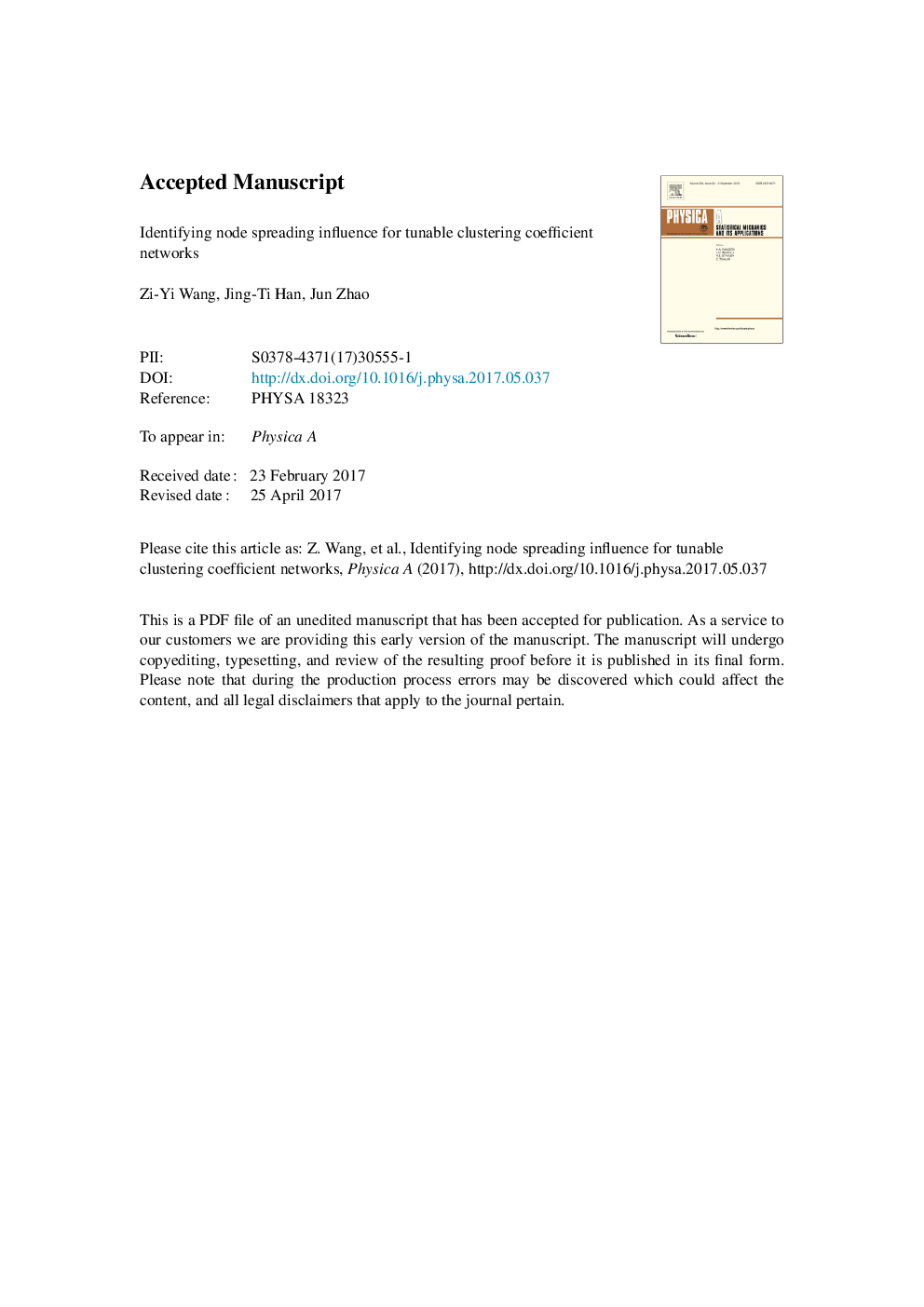| Article ID | Journal | Published Year | Pages | File Type |
|---|---|---|---|---|
| 5102637 | Physica A: Statistical Mechanics and its Applications | 2017 | 18 Pages |
Abstract
Identifying the node spreading influence is of significant for information and innovation diffusion. In this paper, we argue that the spreading process should be taken into account for identifying the node spreading influence and investigate the effect of the network structure, measured by the clustering coefficient, on the performance of spreading dynamics. Firstly, we generate a series of networks with tunable clustering coefficients. Then, taking into account the spreading process, we explore the performances among the Dynamics-sensitive (DS) index and the degree, between, closeness, eigenvector indices. Comparing with the Susceptible-Infective-Removed (SIR) model, the extensive results show that, for different spreading time steps and clustering coefficients, the DS centrality outperforms the performance, Ï>0.97, of degree, betweenness, closeness and eigenvector measures. Moreover, the accuracy of closeness and eigenvector centrality is similar and conducts better in networks with larger spreading rate β=0.20,Ï>0.93. As the clustering coefficient increases, all the performances decrease but DS centrality with least percent of 1.16 at most under β=0.10, and Closeness with the largest percent of 9.75 under β=0.05. This work suggests that the spreading influence not only depends on the network structure, more importantly, the spreading dynamic process also affect the performance greatly, which should be taken into account simultaneously.
Keywords
Related Topics
Physical Sciences and Engineering
Mathematics
Mathematical Physics
Authors
Zi-Yi Wang, Jing-Ti Han, Jun Zhao,
